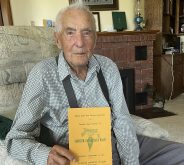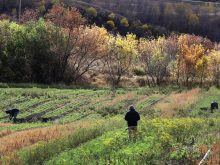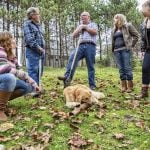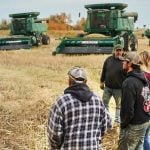George Lane was 28 when he left the American Wild West in 1884 for the foothills of Canada’s western frontier.
When he died in 1925, he was a leading member of Alberta’s cowboy aristocracy and one of the Big Four, the legendary quartet that bankrolled the first Calgary Stampede.
Lane was among the men and women who made names for themselves as they settled what is now Alberta and Saskatchewan, many of them arriving before the territory was divided into provinces in 1905. Whether they helped establish Alberta as a beef giant, pioneered the new science of dryland agriculture or worked to improve the lives of farm women and their families, these leaders carved out reputations that are still remembered today.
Read Also

Starting a small business comes with legal considerations
This article sets out some of the legal considerations to start a business to sell home-grown product, such as vegetables, herbs, fruit or honey.
Ralph Nelson, a retired rancher who now lives in Nanton, Alta., said Lane epitomized the ideals of western heritage.
“He was a real entrepreneur of that era. He was in the meat packing industry É and the farming industry and ranching industry and the horse industry. I think he was one of the early pioneers of the country.”
Lane is best remembered for being one of four men to put up the money to stage the first Stampede and for owning the Bar U, the legendary Alberta ranch southwest of Calgary that he bought in 1902 and today is a national historic site. At one time, the ranch branded 8,000 calves a year and ran a herd of 40,000 head.
Nelson, who is president of Friends of the Bar U, said Lane did more than anyone to attract international attention to the ranch. He also built one of the country’s first Percheron horse operations and grew grain on thousands of acres of farmland east of Calgary.
Born in Iowa in 1856, he followed his father to Montana in 1872, worked as a scout for the U.S. army during the Indian wars and then learned his cowboy skills on a number of Montana ranches.
Nelson said his grandfather knew Lane, describing him as a tough frontiersman who lived by the handshake code.
“There were no contracts or anything in those days. Your word was your bond and that’s just how everybody lived by. I’ve read a lot of stories that if you proved yourself to him, well, he would back you right to the end, once you got his trust.”
By the 1920s Lane controlled a formidable business empire and exerted significant influence on provincial cattle politics, but the empire was starting to unravel.
Mechanized agriculture was replacing his Percherons, drought and low wheat prices threatened his farmland and a U.S. cattle embargo had closed the door to a lucrative market. When he died, his net worth was down to a few thousand dollars and his company was all but owned by the bank.
However, Nelson said the old-timers he grew up with believed that if Lane hadn’t become sick, he would have pulled his collapsing empire together. He had done it before, particularly in 1906-07, when a vicious winter devastated the western cattle industry.
“He took about as big a hit as lots of them did but he was able to survive it,” Nelson said. “He was that kind of man.”
While men such as Lane were instrumental in settling the West, these rugged individualists also had wives and families who often lived in isolation far from home in unfamiliar surroundings. In Saskatchewan, their champion was Abigail DeLury.
Born in Ontario in 1868, she worked as a teacher before becoming the University of Saskatchewan’s first director of women’s work in 1913. Part of her job was to help women across the province form Homemakers’ Clubs, the precursor to the Women’s Institute movement in Saskatchewan.
Gwenna Moss, who retired last year from the U of S’s extension division, said the Homemakers’ Clubs provided women with practical advice about cooking and health and also broadened their horizons in areas such as art, literature and music.
“They were a big, big force in rural Saskatchewan and all across the Prairies.”
Moss said DeLury was perfect for the job of developing these clubs because of her double-barrelled approach to life: both practical and life enriching.
The number of clubs grew steadily, reaching 240 in 1930, the year DeLury retired back to Ontario. Moss said it wouldn’t have happened without her.
“If they hadn’t hired her specifically to do that work, I don’t think the Homemakers’ Clubs would have grown to the extent they did and have the impact on the development of the province that they did,” she said.
“Because of the kind of person she was, she got them onto this footing that made them a very important organization, not just for the self development of the women themselves, but in the development of the community and the province as a whole.”
As prairie farm women banded together, their men were in the fields, tinkering with the craft of farming. This creative spirit produced countless inventions that often disappeared into the maw of agricultural progress, but occasionally someone would come up with an idea that was too brilliant to ignore. Charles Noble was one of those.
Born in Iowa in 1873, he settled in 1909 near what is now Nobleford, the southern Alberta town that took his name. By 1922 he owned 30,000 acres and had been named World Flax King in 1912 and World Oats King in 1915.
Like Lane, he succumbed to the economic conditions of the early 1920s and in the fall of 1922, lost almost everything to the bank. Unlike Lane, however, he still had his health and a will to recover. He accepted the bank’s offer of a $4,000 salary to oversee the sale of his farm equipment and eventually he saved enough to buy back the farm. By 1930, he owned 8,000 acres.
In the 1930s he was at the forefront of efforts to prevent soil erosion. He recognized the importance of leaving stubble mulch on the soil surface, but while the cultivators he had to work with destroyed weeds, they also buried stubble.
It took a holiday to California in 1935 to find the solution. There, he watched a farmer loosen sugar beets in the soil with a straight blade tool before harvesting them. When he returned home, he brought with him a prototype of what would be called the Noble blade. Back in his shop, he began perfecting his invention: a cultivator that would kill weeds but leave the soil undisturbed. It was just what his erosion-stricken colleagues needed and 50 were built and sold in 1937. Noble Cultivators Ltd. was formed and a factory in Nobleford manufactured farm machinery under the Noble name until the late 1990s.
Jack Braidek, a Saskatchewan agrologist and former managing editor of the Western Producer, said Noble’s wide blade had its limitations and others soon adapted it.
“I’m sure there were lots of people who looked at it and said, ÔI can use that idea but I want it narrower and maybe a depth control on each shovel.’ “
However, Braidek said that shouldn’t take away from Noble’s accomplishment.
“It was a conservation measure and certainly sparked an interest.”
While Noble was revolutionizing the science of farm machinery, a Saskatchewan farmer was teaching himself the science of plant breeding.
Seager Wheeler was born in England in 1868 and homesteaded near Rosthern, Sask., in 1890.
Braidek said farmers in Wheeler’s day had only a few grain varieties and most weren’t suitable for the Prairies.
“I think he recognized that right off the bat and was bound and determined he’d improve on the varieties he had.”
Using seed selection, he developed three varieties of wheat, two of barley and one of oats. His grain samples won awards at competitions in New York, Chicago, Winnipeg, Denver and Kansas City.
However, Braidek said one of Wheeler’s biggest contributions to modern agriculture was his use of crop rotations at a time when many farmers believed in growing only one crop.
“That wasn’t Seager Wheeler’s idea. He felt that a farm needed to grow a range of crops and rotate them over the years to control diseases and insects.”
He eventually became known as the Wheat Wizard of Rosthern and his 1919 publication, Seager Wheeler’s Book on Profitable Grain Growing, was a best-selling study of dryland farming.
His interest in research influenced the young University of Saskatchewan, which conducted its early test plots at Wheeler’s farm. Today, the farm is a national historic site and continues to host agricultural research.
Braidek said farmer innovations didn’t stop with the end of the pioneer era. For example, Jim Halford, a farmer from Indian Head, Sask., invented an air seeder in the 1980s that could place seed and fertilizer into stubble in one pass. Braidek said Halford can trace his professional lineage back to Wheeler and Noble.
“Farmers from the day that farming started in Saskatchewan started inventing machines and practices and it’s carried on.”
Today, Halford’s Conserva Pak company sells approximately 60 seeders a year in Canada, Australia and the United States.
Halford said the invention was forced on him by his light soil and hilly fields that in the 1970s were causing erosion headaches.
“I just finally decided we were not going to be tilling anymore.”
Halford’s attempt to solve his own problems was part of a sea change in agricultural philosophy that helped usher in the era of direct seeding and zero till.
While other farmers were attempting the same thing with gravity fed drills, Halford said it was his decision to try making it work with an air system that led to the big breakthroughs.
He is considered one of the giants of conservation farming and was inducted into the Canadian Conservation Hall of Fame in 2000.
Halford said he feels a connection with those early farmer innovators and understands what drove them to succeed.
“It sometimes arises out of necessity and then maybe there’s an element of luck, or something, that makes it sort of finally happen.”














